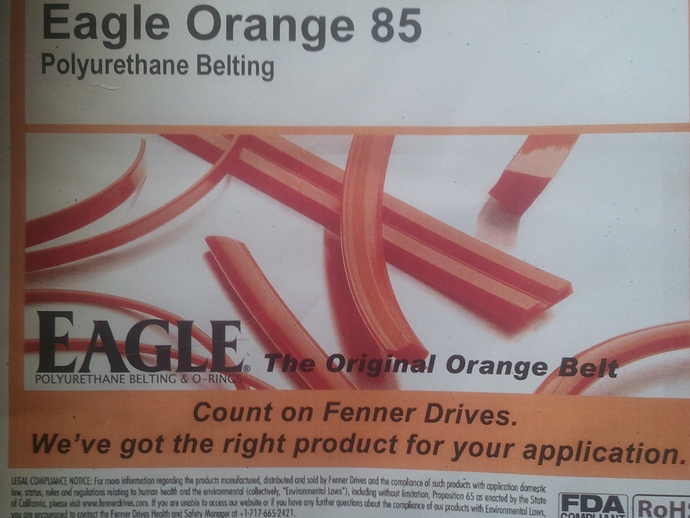
Printing in Polyurethane Rubber using Fenner Drives' Eagle Orange
thingiverse
Following in the footsteps of others, I ordered a 3mm polyurethane belting from Fenner Drives and chose Eagle Orange 85 for its softness and color. I will post my experiences with it soon. My printer setup includes a Solidoodle 2 with Lawsy's MK4 extruder, Repertier Host software, and MLaws modified Marlin firmware. My current settings are: - Temperature: 190 C for the first layer, 180 C for others - Speed: Slow, ~20mm/s - Cooling: Active fan (not sure if necessary but I had it on) - Bed: Kapton with Hairspray, heating optional - Layer thickness: 0.15mm - Extrusion width: 0.42mm (0.5 for infill, which may be increased) I have been working with this filament and had some fun printing a suction cup mount for lithopanes, a boomerang, and small feet for another project. I noticed that the extruder sometimes slips on the filament due to its smoothness, but increasing tension helped. I also designed a small tag for my tweezers. During my first attempt with the stock J-head extruder, I added PTFE to prevent kinking of the filament. For adhesion, I used a Kapton heated bed treated with Hairspray without the heater on. Lower speeds worked best due to the larger diameter of the 3mm filament and its tendency to string. I calibrated the temperature by starting at 215C and reducing it gradually until I found an optimal temperature of 190C for the first layer and 180C for the rest. I printed Cute Octopus says Hello and noticed that the flexible material caused some detail loss in tall, thin designs. Lowering the speed and temperature helped improve the print quality. The finished product has a feel similar to a bathtub rubber duck, making it great for rubber bulbs or model car tires. However, the top layer of small prints tends to melt horribly, so turning down the temp for the last few layers is necessary. Stringing is also a major issue due to the low viscosity of the melt, but printing at 175C helps minimize it. I printed a tire from the polyurethane material and found it to be very flexible, similar to a rubber wristband but less stretchy. Surface felt like acetone vapor-treated ABS. The material is easy to pull out of the nozzle at 100C, making cleaning a breeze. I successfully fitted a finished wheel with the tire, and the tire's flexibility allowed it to fit even if the rim was too small.
With this file you will be able to print Printing in Polyurethane Rubber using Fenner Drives' Eagle Orange with your 3D printer. Click on the button and save the file on your computer to work, edit or customize your design. You can also find more 3D designs for printers on Printing in Polyurethane Rubber using Fenner Drives' Eagle Orange.
